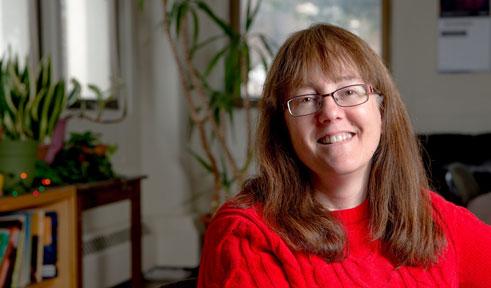
Recent News
Education
Ph.D., Michigan State University
Research
- Chemical Education, peer-led team learning, active learning
The Peer-Led Team Learning Model (Workshop Model) has been incorporated into the General Chemistry and Organic Chemistry sequences. In the Workshop Model, small groups of 6-8 students meet for two hours a week with a peer mentor. The peer mentor is a trained student with excellent facilitation skills, who has taken the course and done well. The students work together on a set of challenging problems provided by the professor. The model removes the passive observer and encourages active participation and therefore active learning. Student participants are expected to construct their own knowledge and understanding of chemical concepts and principles. Students gain experience and confidence in problem solving, reasoning and communication skills. Initial studies indicate that students participating in the Workshop Model on average perform better than those students not participating in the Workshop Model.
Selected Publications
Nyasulu, F.; Barlag, R.; McMills, L.; Arthasery, P. Mass-Based Approach to the Determination of the Henry’s Law Constant for CO2 (g) Using a Diet Carbonated Beverage. J Chem. Educ. 2019, 96, (11), 2661-2664.
Nyasulu, F.; Barlag, R.; McMills, L.; Arthasery, P.; Ounkham, W. A Simple, Safe, and Easy Water Displacement Exercise for the Identification of Two Metals and the Composition of a Mixture. J. Lab. Chem. Educ. 2018, 6, 21-23.
Nyasulu, F.; Barlag, R.; McMills, L.; Ounkham, W Arthasery, P. Simplicity and Elegance of the Wash Bottle in Water Displacement Schemes. J. Lab. Chem. Educ. 2018, 6, 18-20.
Nyasulu, F.; Allman, B.; Nething, D.; Barlag, R.; McMills, L.; Arthasery, P. Acid-Base Titration Curves in the General Chemistry Laboratory: An In-Depth Study. The Chemical Educator , 2016, 21, 88-92.
Nyasulu, F; Bobbitt, D.; Arthasery, P.; McMills, L.; Barlag, R. Making Connections Between Calorimetry and Acid-Base Chemistry in the Laboratory. The Chemical Educator , 2015, 20, 67-71.
Nyasulu, F.; Barlag, R.; Arthasery, P.; McMills, L. Reducing Heavy Metal Waste in Potentiometric Exercises in the General Chemistry Laboratory. The Chemical Educator 2014, 19, 379-383.
Barlag, R.; Nyasulu, F.; Starr, R.; Silverman, J.; Arthasery, P.; McMills, L. A Student-Made Silver-Silver Chloride Reference Electrode for the General Chemistry Laboratory: ~10 min Preparation. J. Chem. Educ. 2014, 91 (5), 766-768.
McMills, L.; Nyasulu, F.; Barlag, R. Magnetic Susceptibility of Coordination Compounds in the General Chemistry Laboratory. J. Lab. Chem. Educ. 2014, 2, 11-14.
Barlag, R.; McMills, L.; Nyasulu, F. Upgrading General Chemistry Laboratory Equipment and Laboratory Procedures for Improved Efficiencies and Savings. J. Lab. Chem. Educ. 2014, 2, 15-17.
Nyasulu, F.; McMills, L.; Barlag, R. Weak Acid Ionization Constants and the Determination of Weak Acid-Weak Base Reaction Equilibrium Constants in the General Chemistry Laboratory. J. Chem. Educ. 2013, 90 (6), 768-770.
Nyasulu, F.; Barlag, R.; Wise, L.; McMills, L. The H3PO4 Acid Ionization Reactions: A Capstone Multi-Concept Thermodynamics General Chemistry Laboratory Exercise. J. Chem. Educ. 2013, 90 (5), 642-645.
McMills, L.; Nyasulu, F.; Barlag, R. Comparing Mass and Volumetric Titrations in the General Chemistry Lab. J. Chem. Educ. 2012, 89 (7), 958-959.
